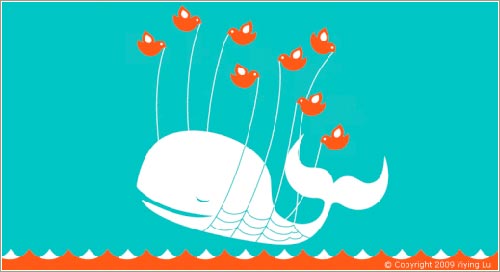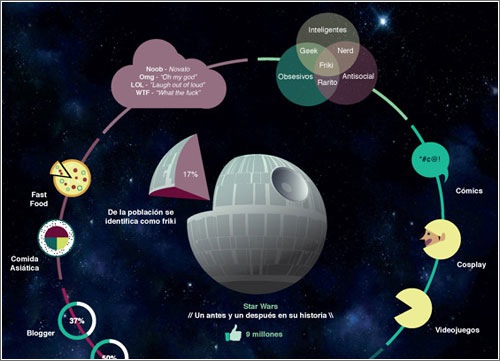
Total Pageviews
Thursday 13 June 2013
JVC unveils $18,000 4K interchangeable lens camcorder with Nikon F-mount

In The Shadow Of YouTube, Vuclip Grows Its Mobile Video Network To 80M Uniques, Fends Off Suitors And Eyes Up Acquisitions

When it comes to online video networks, Google’s YouTube is the oversized and undisputed king of the hill with 1 billion monthly unique visitors. Yet that domination sometimes obscures some of the interesting developments that are afoot the smaller startups also working in the same space. Vuclip, the California-based mobile video streaming network that focuses its efforts mainly in emerging markets, is today reporting that it now has 80 million monthly unique users, nearly double the 45 million it reported back in February, along with 1.5 billion minutes of mobile video served every month across 700 channels+ of content from Disney, Sony and other premium providers.
Backed by $27 million from the likes of NEA and SingTel, the startup’s CEO, Nickhil Jakatdar, tells TechCrunch that with the current rate of growth, it expects to be profitable by the end of 2014, without needing to raise any more money.
That, and Vuclip’s video streaming inventory and the technology underpinning it, are now making the company an acquisition target. We have heard from well-placed sources that Vuclip has been approached both by large portal companies, as well as carriers, looking for assets like these.
On the portal side, it seems that the interest may be in the video platform and the technology — both offering inventory and ways of monetizing it to companies looking to sell more rich-media online advertising. Carriers, meanwhile, might be more interested in picking up Vuclip’s captive video audience as a way of connecting and selling services to mobile consumers. (Reminder: one of Vuclip’s investors is the carrier Singtel.)
Jakatdar avoids commenting on the details of who may have approached the company, but he does admit it has been, and that he has said no for now, partly because he wants to see how much further he can grow the company before it either gets transformed or shut down by a new owner (not uncommon practice in the world of M&A).
“We’re not ready to hand over the keys,” he says, but he also adds that the company is interested in buying more assets itself.
In February, Vuclip made its first acquisition, the mobile video company Jigsee, to expand its own premium content inventory and app capabilities in India, one of Vuclip’s biggest markets. Now the aim is for “a few more” acquisitions in the next year. These, he notes, will be about picking up more technology to improve its platform, rather than to acquire users or content (which it seems to be doing fine on its own steam).
The fact that Vuclip is significantly smaller than YouTube has pushed it to think beyond advertising when considering how best to make money.
Not only does it lack the scale needed to get any kind of decent return on ads placed alongside premium content — let alone those trying to monetize long-tail content — but mobile advertising is still a small-time game, especially in the emerging markets of Asia and Latin America where Vuclip is used most.
Mobile data networks constrained in these parts of the world, and the mobile ad business is simply not big enough there yet. “In the U.S., mobile advertising is only now starting to become an interesting business,” he says — it cracked the $1 billion mark last year — but emerging markets are far behind that.
In addition, Vuclip’s user base is not yet premium enough to merit high CPMs: the majority of devices, he says, are “the Asha’s of this world, not the Galaxy’s,” referring to Nokia’s low-end smartphones and Samsung’s high-end Android devices. That’s changing, of course. In the Middle East, he notes, iPhones are booming on their network; but not fast or big enough to drive a mobile ads business.
And so Vuclip is turning to something else to make money alongside mobile marketing: paid content and carrier billing. The company offers content on an a la carte, bucket pre-purchase, and subscription basis, with one-off and “valuepacks” seeing the most usage, Jakatdar says. Right now, the conversion rate on paid content offerings is between 5% and 6% — meaning of all the video views it sees on its network, that’s the percentage that are paying for the privilege, usually for cents per view.
The carrier billing decision is because these are emerging markets we’re talking about, where users often don’t have payment cards and so cannot hold iTunes accounts and the like.
But while carrier billing, charging purchases to a user’s bill or off a prepaid account, is often touted as a very easy, user-friendly, successful way to charge for content on phones, it also has its challenges.
Interestingly, the company’s projections on breakeven are based on the fact that right now, only 25% of its user base is actually being offered paid content. That’s because many carriers in the markets where Vuclip is most popular are not offering carrier billing yet themselves. Jakatdar says that it will be adding 10 more carriers to the roster this year in Asia before focusing on adding carrier billing in Latin America next year.
via TechCrunch » Startups http://feedproxy.google.com/~r/techcrunch/startups/~3/bmnhH-WvJ5s/
Broadcom announces quad-core HSPA+ chipset destined for budget Android phones

Huawei Ascend W1 review: the company's first WP8 device is promising, yet flawed

CoPilot comes to Windows Phone 8: free offline sat nav, £18 for premium features

Yahoo's spending spree continues: conference call and photo apps, Sky News streaming deal

Google updates Gesture Search, now recognizes over 40 languages

Samsung chief alludes to 'mirrorless' Galaxy Camera sequel coming June 20th

Facebook opens first European data center, uses company-designed servers

How to Customize Your Mobile Google Maps Experience

TRAQ quadricopter locates and traces down the source of radio signals (video)

Researchers flaunt flying bike, no mention of alien-caching basket (video)

Yahoo's Shopping Spree Continues With Conference Calling Startup Rondee

Thought Yahoo’s acquisition spree would culminate with a $1.1 billion deal for Tumblr? Nope, not so much. In fact, the buy-happy company just quietly made its second acquisition in 24 hours — in two different markets, no less. Yes, Yahoo followed this morning’s purchase of iOS photo app maker, GhostBird Software, by making a play into the enterprise conference calling space. Wait, what?
Yes, users of six-year-old free conference calling service, Rondee, were tonight informed via email that the startup has been acquired by Yahoo for an undisclosed sum. It will also suffer the same fate met by other recent Yahoo acquisitions — like MileWise, Astrid, GoPollGo and Loki Studios to name just four — in that it will soon be going the way of the dinosaur. After June 30th, the company’s website now reads, users will no longer be allowed to access their data or create new conference calls.
The startup will continue its progressive shut down from there, officially closing operations on July 12th, before ultimately cutting off user access to their calling data on July 30th, the startup said in an email to its customers today. However, to avoid stranding its users completely on such short notice, the company said that it’s arranging for “user Login ID and on-demand pins to work with InstantConference,” a company (and, previously, a competitor) it describes as a “highly reputable conference calling service.” Not sure that’s much consolation. “Hey, we may be forcing you to leave … but at least the place we’re sending you has electricity, right?”
What’s A Rondee
Rondee, for those who haven’t been following the crowded and congested conference calling market, launched in 2007 on a mission to build the “Evite for conference calls.” The startup set out to lower the barriers to entry in the conference calling arena and make it accessible to the masses. Today, that means it offers basic conference calling capabilities around the clock (for free) to anyone with an email address.
Granted, for those looking to get “fancy” with call recording, like having access to audio, custom tones, call directories and call scheduling, some account setup is required. But that’s about it. Users can choose between free, on-demand conference calling, or free, “Scheduled Rondees,” in which users can pick a future date and time to schedule a conference call and let Rondee send out email invitations to which invitees can respond to and use via the company’s website. Straightforward, easy to use and free.
Of course, while those are traits every company should shoot for, the VoIP market looks a little bit different than it did six years ago, becoming nearly ubiquitous thanks to companies like Skype and Google, meanwhile, startups like UberConference have moved onto free visual conference calling to compete with Hangouts et al. Today, Rondee’s basic VoIP model sounds very familiar.
So Why Did Yahoo Just Buy This?
While Yahoo nor Rondee has yet to share any more details on the terms of the deal or the motivation, we do know from a quick Google search (and a look at its press page) that the startup has been pretty quiet of late. Sure, it’s likely this wasn’t an exorbitantly expensive buy for Yahoo, but this also hasn’t been an area of strength (or focus) for Yahoo for a long time, which starts to make it seem like there isn’t really a good explanation for this one.
Maybe Yahoo wants to integrate Rondee into its internal conference solution, for internal IT use, seeing as it’s cheaper than buying an enterprise solution? Probably not.
Er, Maybe Because…
What may be more likely (and hopefully is the case) is that Yahoo liked the team and was eager to make use of its talent, so Marissa Mayer pushed Yahoo’s Acme Acqui-hire Button so that Rondee can join it in re-building Yahoo Messenger. Maybe? After all, on its website, Rondee says that it will be joining Yahoo’s Small Business Team, so while it may be a stretch, motivation could lie in the company’s messaging client.
Marissa Mayer has made talent acquisition one of her top priorities since becoming CEO, and mostly her shopping spree has targeted mobile — in other words, showing the company understands that its mobile strategy and products have to evolve if Yahoo ever hopes to be truly relevant again. (And, really, it’s probably a little late, but…)
Right now, it’s easy to take a look at Yahoo’s product portfolio and sigh. Case in point: People used to Yahoo Messenger as their go-to chat app. (Well, some people did, somewhere. We’re still trying to find out who they are exactly.) But the point is that Yahoo’s messaging client used to be enormous, and now it’s about as cool as the Macarena. Meanwhile, sadly for Yahoo, gamified and chat-ified messaging apps are all the rage and continue to proliferate, especially in emerging markets. In some Upside Down World, this could mean that there’s still opportunity here for Yahoo.
Though with Google’s assets like gChat, Google Voice, Gmail and Hangouts, just to name a few, Yahoo has a long way to go. A pretty long way. Sure, if anyone knows how to get Yahoo up to speed using Google’s playbook, it’s Marissa Mayer. But then there’s WhatsApp, iMessage, Viber and too many more to name. Google launched free voice calling from Gmail nearly three years ago, doing the same for Yahoo Mail and just copying the Google Roadmap — would be dangerous and, well, just sad.
Or maybe not. Maybe Yahoo will use Rondee as part of a foundation on which it will build a Hangouts competitor. Why the world needs that, of course, is another question entirely — sorry, Yahoo Mail diehards.
These are a few possible explanations for Yahoo acquiring Rondee, though I’m not sure they’re particularly satisfying. To this point, it’s worth reading this post (really, lament) on Yahoo Messenger from Yahoo’s former director of global tech initiatives. Marissa Mayer seems to be addressing some of the friction he cites as contributing to Messenger’s downfall, a lot of which he attributes to leadership and the lack of a unifying product vision, the latter of which fittingly smacks of the very product strategy currently at work at the Googs.
It’s a familiar tune at Yahoo, some of which appears very fixable. But watching Marissa Mayer acquire all these startups that are on their last lifeline or just keeping their head above water is a good way to bring in fresh and (relatively) cheap talent, sure. And maybe she’s got the vision and is the Great Unifier it sounds like Yahoo needs. In the end, perhaps it could be like watching Tony Stark build his first Iron Man suit from spare parts and scrap metal, or maybe it will just be like watching someone try to produce gold bullion by painting a bunch of bricks yellow. (Complemented, of course, by the sound of a sad trombone.)
For more, find Rondee’s email to users below:
Dear Rondee User:
We thank you for being with us over the last six years as we grew Rondee’s free conference calling service. It has been a privilege to work with you.
Yahoo! has just acquired Rondee, and we will be joining Yahoo! Small Business to continue innovating with technologies that help small businesses and groups.
Starting July 12, 2013, RONDEE WILL NO LONGER BE OPERATIVE. To minimize inconvenience to you, we have arranged for your Login ID and Rondee On Demand PINs to work with InstantConference, a highly reputable conference calling service. InstantConference has created a special free plan for Rondee users with unlimited minutes, unlimited conferences and up to 150 callers per conference.
You’ll do On Demand calls with InstantConference the same way you did with Rondee:
REDACTED
If you want to use advanced features such as audio recording, call scheduling using the Outlook add-on or real-time monitoring, you’ll need to log in to the account created for you at InstantConference.REDACTED
There are three main differences between advanced features on Rondee vs. InstantConference:Call recording works differently on InstantConference. Instead of activating audio recording in advance online, the organizer does it on the call by pressing *9 and entering the 4 digit code shown above, or by turning on audio recording through a moderator control panel. Learn More
InstantConference has a fully featured moderator control panel. You can monitor call attendance, mute, disconnect, or lock the conference in real-time. Learn More
InstantConference has a different way of handling scheduled conferences. Rather than the web-based format used by Rondee, InstantConference offers an Outlook Add-On which is convenient and easy to use. Learn More
BY USING YOUR RONDEE LOGIN AND PIN(S) WITH INSTANTCONFERENCE, YOU CONSENT TO THE INSTANTCONFERENCE TERMS OF SERVICE AND PRIVACY POLICY.CLICK HERE for Terms and Conditions.
CLICK HERE for Privacy Policy.
For Premium users with balances in their PayPal account, we will be refunding those balances right after July 12, 2013. InstantConference also offers toll-free conferencing with plans as low as 2.9 cents a minute.
PLEASE NOTE: The Rondee service will soon no longer be operative and will no longer accept new sign-ups. Current users will be able to continue using Rondee for conference calls through July 12, 2013 and log in to access account information through August 12, 2013.
For questions about the Rondee service or your Rondee account, click here.
For questions about InstantConference, click here.
Thank you again for your support,
The Rondee Team
via TechCrunch » Startups http://feedproxy.google.com/~r/techcrunch/startups/~3/VQ-6g0RiMJo/
Amazon offers 'Launch Edition' PS4 for wealthy early-adopters, instantly sells out

«Soy friki y este es mi universo», una guía visual
Nacho Fernández en Behance: Mamá, soy un friki y este es mi universo .
via Microsiervos http://www.microsiervos.com/archivo/humor/soy-friki-este-es-universo-guia-visual.html
Memes futurámicos

«No estoy seguro de si es un episodio nuevo
o uno ya emitido que vi estando borracho»
Un par de esos grandes detalles de humor inteligente procedente de los tubos de Internet y de las series frikis de TV, que no habíamos mencionado todavía…
El primero de ellos, el tagline de la apertura del primer capítulo de la séptima temporada de Futurama, donde Matt Groenig utiliza uno de los memes del propio Futurama para abrir el episodio.
El efecto es bastante curioso porque la cronología completa sería: Existe la serie → parte de la cual se convierte en meme de Internet → que luego aparece en la propia serie → explosión autorreferente (!)
Como bonus, los titulares de la prensa del futuro cuando el profesor Farnsworth (en «versión 8 píxeles») encuentra la respuesta a todo y se produce otra especie de colapso en el universo:

«Finaliza la búsqueda del Conocimiento
Pero se intensifica la búsqueda de porno»
Y así es como se plantea la vida en el año 3000, amiguitos.
via Microsiervos http://www.microsiervos.com/archivo/humor/memes-futurama.html
Apple Might Launch a Bigger iPhone, as Well as a Cheaper, Colorful One

Philip Pullman argues that authors are being shortchanged on e-book loans

Google Blogger for Android gets tablet support

HTC Butterfly S spotted with BoomSound stereo speakers and Sense 5?

Apple tells price fixing courtroom it owns 20 percent of the e-book market

Cube Slam: Pong adaptado a los tiempos modernos
Esta nueva versión del que tal vez es el videojuego más antiguo del mundo ya está circulando por ahí: se llama Cube Slam y es uno de esos «experimentos con Chrome» para demostrar la potencia de ciertos juegos directamente en el navegador de Google.
Lo más divertido es que se puede jugar contra el ordenador oso o contra otras personas, en un 3-D poligonal sencillo pero resultón.
via Microsiervos http://www.microsiervos.com/archivo/juegos-y-diversion/cube-slam-pong.html
Nintendo to release its first free-to-play game by March 2014

Official Cloud Print app hits Google Play, streamlines your wireless printing needs

Reuters: Apple considering 4.7-inch and 5.7-inch iPhones

Algunas cosas que recordar de Twitter (o cómo cambia el cuento cuando por los proyectos pasan los años)
Este artículo se publicó originalmente en Cooking Ideas, un blog de Vodafone donde colaboramos semanalmente con el objetivo de crear historias que «alimenten la mente de ideas».
Twitter es sin duda uno de los grandes éxitos de los últimos años: más de 200 millones de usuarios activos que envían unos 400 millones de tuits cada día. Vemos los códigos de los hashtags en televisión continuamente, nos asombramos con los trending topics y los personajes que tienen millones de seguidores y a nivel económico el servicio «del pajarito» tiene una valoración tan alta que es sencillamente incalculable.
Sin embargo, no siempre fue así: quienes estábamos por aquí a principios de los 2000 (se lanzó oficialmente en 2006) recordamos haber vivido su evolución, de dónde venía y cómo realizó la travesía del desierto que toda compañía exitosa debe cubrir hasta llegar a su destino. He extraído cinco detalles quizá no muy conocidos que creo que son interesantes para darse cuenta de que las cosas no siempre son tan fáciles como parecen.
1. Los tipos que inventaron Twitter ya habían inventado Blogger antes, además de otros servicios que fracasaron miserablemente. Sí, hablamos de Blogger, el que fuera más popular servicio de alojamiento de blogs hasta que Google lo adquirió y abandonó a su suerte. Curiosamente, Blogger nació como un proyecto colateral de una empresa fundada originalmente para crear videojuegos. Por otro lado, tras dejar Google y fracasar con un sistema de audioblogs llamado Odeo –que era otra de la modas de la época– surgió Twitter, nuevamente como un pequeño proyecto secundario desarrollado como herramienta interna. Moraleja: ni siquiera los creadores de los grandes éxitos saben muchas veces qué va a triunfar y qué va a fracasar.
2. Twitter se hizo muy popular a través de SMS. Cada país tiene sus circunstancias en cuanto a las comunicaciones; aunque en España Twitter se popularizó vía web en Estados Unidos su despegue se produjo entre otras cosas porque era muy popular a través de SMS y porque las tarifas de comunicaciones allí y en otros lugares son notablemente distintas. Lo mismo ha sucedido con otras redes sociales y sistemas de chat como Whatsapp, que donde mayor número de usuarios parece tener es en España.
3. Twitter ni siquiera se llamaba Twitter. Su primer nombre fue Twtrr, en la época de la moda 2.0 de los «nombres sin vocales». Al final acabó con el nombre completo más convencional que ahora conocemos. Otras funciones que tampoco existían y que inventaron los usuario (y no los creadores del servicio): los #hashtags temáticos y los RT (retuits). Y el primer lema para animar a tuitear era «¿qué estás haciendo?» y no «¿qué sucede?» lo cual probablemente ha generado más gerundios en las conversaciones que ningún otro sistema de comunicación.

4. La ballena «fail» fue el cachondeo de Twitter durante meses, si no años. Debido a su espectacular crecimiento, los servidores de Twitter no tenían capacidad para soportar a tantos usuarios simultáneamente; el servicio simplemente se rompía. Con el tiempo cambiaron la pantalla de error por una icónica y surrealista ballena, más conocida como Fail Whale, que se ha asociado con el «morir de éxito» de muchos proyectos. Pero el desánimo no les pudo y años después los ingenieros lograron una arquitectura bastante fiable que funciona sin problemas.
5. ¿Tuits con fotos? ¿Tuits desde el espacio? ¿Hashtags en la televisión? Pocos hubieran podido imaginar todas estas cosas cuando Twitter estaba naciendo «para hablar con los amigos», demostrándose una vez más que el futuro de muchos inventos no esta escrito, sino que depende de los usuos que la gente haga de ellos.
via Microsiervos http://www.microsiervos.com/archivo/internet/cosas-que-recordar-de-twitter.html
Amazon's bringing its Kindle Fire HD 7, 8.9 to India on June 27th


